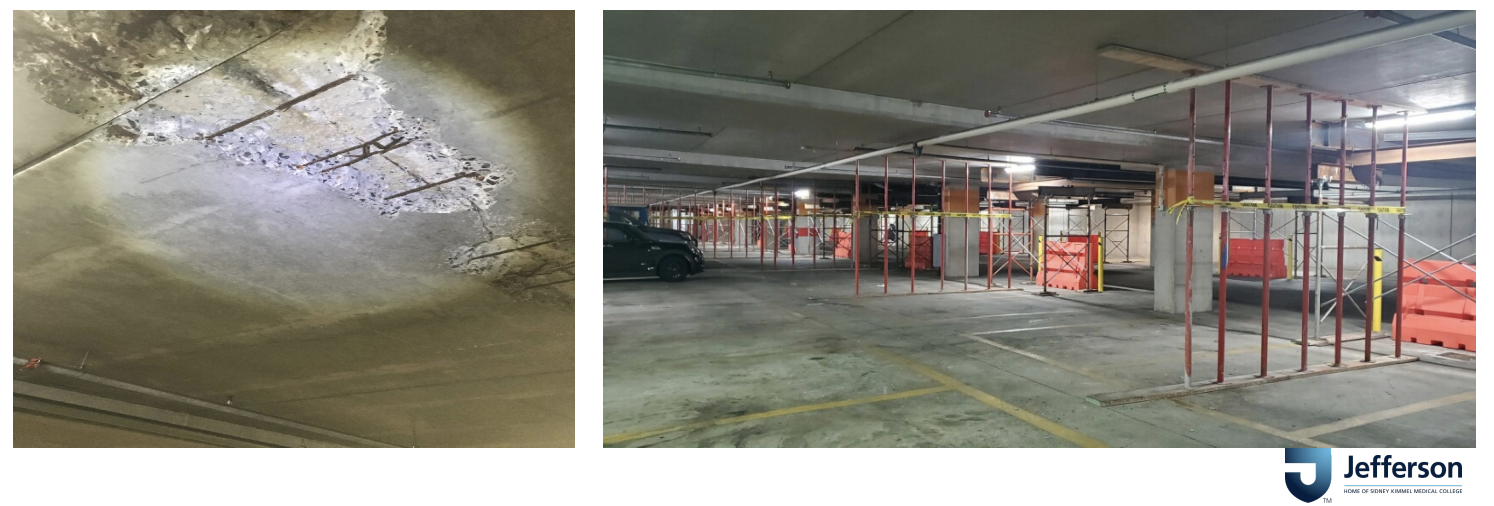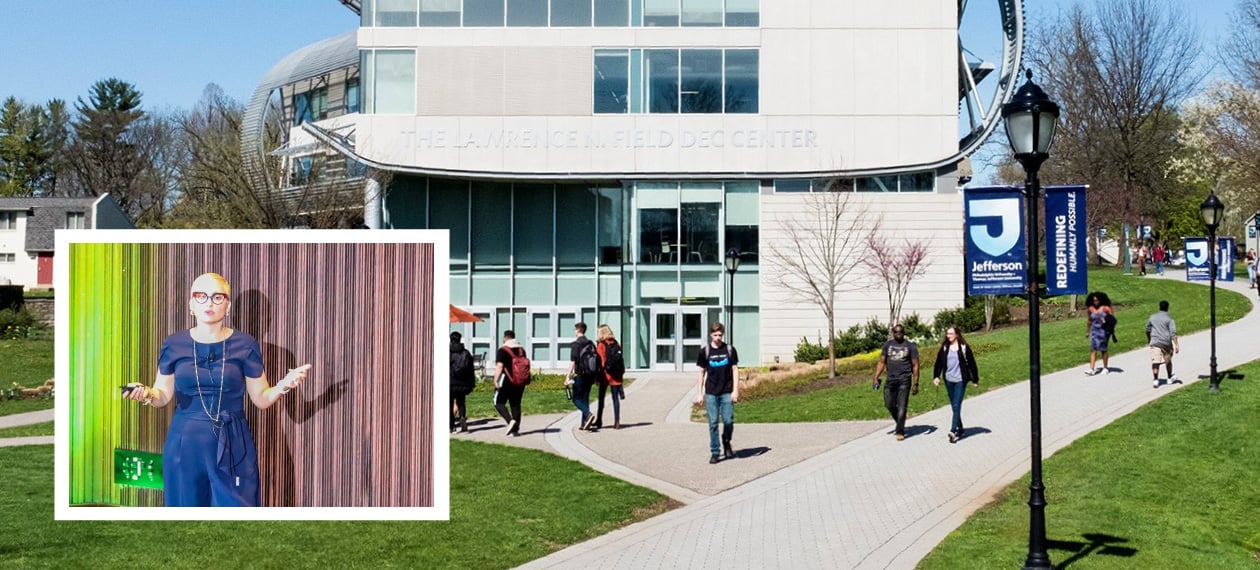Three of the buildings at Thomas Jefferson University used to have a major water problem. Every time a storm hit the campuses, rainwater would inevitably find its way in, requiring closures and cleanups and all the operational headaches that follow. When the university finally invested $6.2 million in window treatments on the three buildings, the effort paid off: as Hurricane Ida brought 7-10 inches of rain to the region in 2021, the buildings suffered nary a drop of water infiltration.
“People love to speak to the sexy new buildings and projects, but this shows how deferred maintenance is just as critically important to the success of Jefferson,” Helene Krug, Jefferson’s Vice President of Capital Management, told her colleagues in an email. She swiftly received a cascade of replies agreeing with her, stressing the importance of focusing on Jefferson’s existing infrastructure.
For Krug, this story is a testament to the close collaboration between the university’s finance and facilities departments, which she describes as “joined at the hip.” But she recognizes that this is not exactly the norm in higher education. In a presentation at the Higher Ed Facilities Forum, Krug explained why a strong partnership between facilities and finance is so important, what her own partnership has accomplished, and what she’s learned along the way.
It Takes a Village
It takes more than just the finance department to run a good capital program. “It really needs a partnership between operations, facilities, information systems & technology, and finance,” she said. She encouraged facilities leaders to view their finance counterparts as trusted partners, rather than gatekeepers or even roadblocks to approval.
While capital programs and facilities project managers operate at different scales, at the end of the day they bear many of the same responsibilities: overseeing projects, managing processes, and shepherding both people and processes to the finish line.
“At Jefferson, I really like to think we are and act as one,” Krug said of her facilities partners. “We’re one team, we have one goal, and we have one mission – and that is to improve lives.”
Crucially, the partnership benefits both sides. It was her work with Jefferson’s facilities department, Krug said, that helped her master her own domain. “When I first started as an AVP of Capital Management, I had no idea about anything on capital projects,” she recalled. “We had huge capital overruns. Projects were always running over cost. They were always coming back and asking for money. We had huge carryforwards on projects… By working with Facilities and really learning and understanding what these processes were and what these timelines were, I was better able to adjust the capital management process and program in order to align better.”
Conversely, she’s used her expertise to help the facilities team get invoices paid on time, complete projects by the deadline, and swiftly maneuver proposals through the approval process.
A well-oiled facilities-finance partnership has undeniable benefits: it can reduce carryforward amounts, avoid cost overruns, improve cash flow schedules, speed up approval and design processes, strengthen estimates and timelines, and optimize capital budgets. In other words, it can make life easier for everyone involved.
“It's a win for facilities, because they can get more money for new projects. It's a win for finance, because we're not constantly following up on projects. And of course it's a win-win for the organization as a whole,” Krug said.
Changing the Perception
If that’s not a compelling enough sales pitch, consider what a strong partnership can do for deferred maintenance. The “heart and soul of facilities and capital,” as Krug describes it, occupies the paradoxical space of being crucial to operations and perpetually challenging to finance.
“Deferred maintenance is perceived as just being costly,” she explained. “It's really hard to get funding, because who wants to give a gift for a new HVAC unit? Philanthropy is normally for the crown jewels of new buildings and new programs and exciting new technology; nobody wants to donate money for you to update the facade of your building.”
How do you change the perception from “deferred maintenance as money pit” to “deferred maintenance as the organization’s backbone”? Easy: get Finance on your team. “Finance knows the audience. Finance deals with this audience all the time and they're always presenting to this audience,” Krug said.

Hamilton Garage
She described a recent garage repair project at Jefferson that she helped push through by packaging it with other needs. One key strategy was to frame the maintenance demands in terms of the organization’s broader mission. “Leadership has a tendency to glaze over when you start talking about KPIs, when you start talking about the FCI index,” she said. Focus instead on the effect on operations: the operating rooms and classrooms shut down due to HVAC repairs or water damage (or both), the research lost, the revenue down the drain.
“It’s all about the money,” Krug stressed. “When they present that they need $40 million to get the buildings where they need to be for the FCI index, but we only fund $20 million, the following year that $20 million has a cost increase, and now cost is $30 million, and you still need another $40 million for regular deferred maintenance that year. So you now have gone from a cost of $30 million to $70 million in one year. And that kind of a graph is going to get their attention.”
A little bit of teamwork can save tens of millions of dollars; all it takes is reaching across the aisle. “It works better for you, it works better for me, and in the end it works better for the organization,” Krug concluded. “Finance folks really aren't all that bad. But when we're part of your team, we really can be your best advocate.”

Posted by
Join us at HEFF!
An interactive retreat for facilities leaders at the nation's top colleges and universities.
Nov 8-10, 2026 | San Antonio, TX
Learn More









Comments